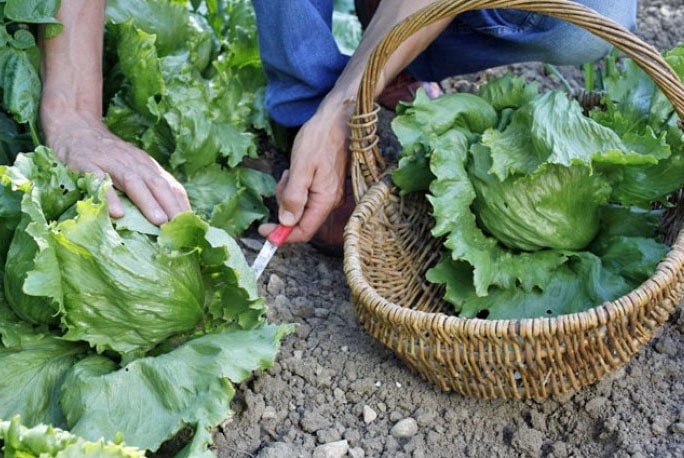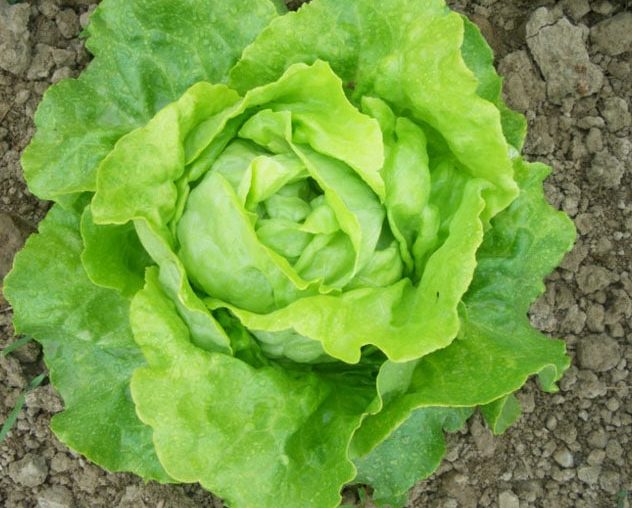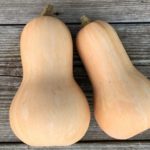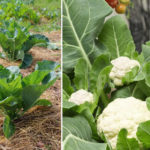When to sow lettuce?
The time when you plant lettuce varies according to the method of cultivation, but also according to the varieties, however the period ranges from February to October.
Our advice By planting it at different times, you will have a more spread crop.
Which varieties to choose?
There are 450 lettuce varieties listed in France and 2,200 in Europe. The selection continues to increase for two reasons: to offer original varieties to consumers and to create varieties that are more resistant to Bremia, lettuce late blight.
Classification is based on different morphological factors:
The lettuce :
- Lettuce batavia with crisp leaves with parallel veins. These are divided into several categories:
- The European batavia : its apple is not detached from the skirt, we harvest only the apple leaving the skirt on the ground. It will then be cut into thin slices and used as a salad, as a garnish or in sandwiches.
The american batavia still called iceberg : the apple is detached from the skirt, it is harvested as a whole plant and it is prepared as a classic salad.
- The butter lettuce: its leaves are tender and its nerves pinnate.
- The fat lettuce: it is a head lettuce quite crisp, with thick leaves and pinnate veins, and resistant to heat which explains why it is often grown in the south.
- The lettuce to cut: it comes in the form of a bouquet of open leaves, according to their form, it is called Oak Leaf or lollo.
- The lettuce stem is also called asparagus lettuceIt does not have an apple and it is its bulging stems that are eaten, especially in Asia, having taken care to cook them.
- The Romaine lettuce: has an elongated apple, crisp leaves with a large central vein.
They are classified according to the period when they will be harvested.
- The spring lettuce (P) are varieties to be grown before heat and fast growing.
- The autumn lettuce (A): they can be harvested until the first frosts and they resist moisture and cold.
- The winter lettuce (H): are grown under shelter in areas where winter is mild.
- The summer lettuceThey are long to seed and they resist heat well.
- Butter lettuce "Apia": it is cultivated all the year except in winter in the regions of the north of the Loire, it is very appreciated for its gustative qualities.
- The lettuce butter of the good gardener It has a large green apple slightly tinged with green and is grown in summer and autumn.
- The butter lettuce "golden yellow garotte" : it is grown in spring and winter, it is in the form of a small apple with golden blond foliage. Its growth is fast, the sowing is done since February.
- The butter lettuce "wonder of the four seasons ": it is grown in summer and autumn, it has a little tight apple and very strongly tinged with red.
- The blonde batavia of Paris : grown in summer and autumn, it resists heat, leaves are crispy and the apple is big.
- The batavia "Golden Spring" it has golden blond foliage, is disease resistant, tasty and is grown in the spring.
- The Batavia "curly Beauregard" presents a foliage of a beautiful green, they are very crisp and it's a summer salad.
- The batavia red Grenoble: it has green leaves tinged with red, it is crunchy. It is grown in spring, summer and fall.
- The Grasse "Rougette of Montpellier" : it is grown in winter and spring, its little red-leafed apple forms at the end of winter.
- The fat "cracker du midi" grown in all seasons, it is indeed resistant to heat and cold.
- The fat sucrine is a salad that is grown in summer and autumn and does not fear heat.
- Romaine lettuce :
- The gray market garden: grown in spring and autumn, its leaves are crunchy with a large vein.
- Market gardening blonde: its leaves are thick and crisp and it is resistant to heat.
Lettuce to be cut
- Blond oak leaf: its leaves are tender, very cut and tasty.
- Salad red bowl : its foliage is red and its leaves are very cut.
- Salad Lollo Rossa: the foliage is very curly and dark, this salad repels after each harvest, it is slow to rise in seeds and resists perfectly to the heat, it is planted in summer and in autumn.
Lettuce stalk or asparagus lettuce:
- celtuce: it is grown in summer and autumn, it never forms a big apple and its leaves are long and very narrow. It is necessary to wait until the stems have a height of 30 cm before consuming them as asparagus.
What to do before sowing lettuce?
Before planting your lettuce, lightly scratch the soil with the tip of the claw and then water copiously.
How to sow it?

Sow it under frame
The location must be sunny enough for the seedlings to enjoy the heat.
- Sow online or on the fly, as clear as possible and over the entire surface.
- Lightly scratch with the tips of your tool.
- Tamp the earth with the back of the rake.
- Water generously.
- Place a wintering veil, then close the frame.
- When your salads begin to rise, open the frame a little.
- Plant the most beautiful plants in the ground, cut some of the foliage and water the root ball.
- Leave 25 cm between each plant.
- Do not bury neck that could rot.
- Tamp lightly and water.
Sow in the ground
Seeding should be done on a wide row. Draw a row with the breakdown of a burrow, then sow your lettuce. Seedlings are preferably in the rising moon.
Where to plant lettuce?
You can plant your lettuce in different ways: in the ground, under tunnel or under frame. However, you must make your choice according to the varieties. Seeding is done either in the ground or in the nursery.
Choose a soil with a near neutral pH of 6.7 to 7 preferably. Then everything depends on the production periods. The land will be lighter in spring, for winter crops it will be well drained and frank. For fall and summer productions, it will be rich in organic matter and rather heavy.
How to maintain it?
It is recommended to regularly bun your lettuce during the cultivation, it allows to aerate the soil permanently.
Lettuces are simple to grow and require little maintenance, however, it is best to rotate for two or three years to get a good harvest.
You can plant lettuce near carrots, beetroot, cauliflower, strawberry, radishes, peas and cucumber. However, parsley and sunflower nearby should be avoided.
How to water lettuce?
It is a salad that requires a regular water intake. Otherwise, the crop would be jerked and it could rise prematurely.
It shows signs of dehydration when its leaves begin to wilt and soften, then water before they turn yellow and dry.
In dry weather, the right frequency is 2 or 3 times a week so that they do not bloom. You can water with any water.
You must water around the lettuce with a watering can without palm so as not to wet the foliage.
Harvest lettuce: when and how?

In general, pick lettuce when they are perfectly formed. Regarding the oak leaves, they are harvested as and when.
The best way to obtain a continuous harvest is to stagger the seedlings and the succession of varieties.
It is difficult to preserve and it is recommended to taste it quickly after picking.
Propagation: it can be done by sowing, like pea, tomato or bean, it is highly autogamous. Hybridizations are very rare, so the seeds faithfully reproduce the parent variety, no unpleasant surprises.
Lettuce diseases and what to do?
The different diseases that can affect lettuce:
The cryptogamic diseases :
- The fodder from Pythium, Rhizoctonia or Botrytisthey can spread a crop completely. You must then put a decoction of horsetail.
- The gray mold, sucker or anthracnose. The decoction of horsetail is effective.
- The Sclérotinose causes rot of the collar and the base of the leaf. Then remove the affected plants and rotate the crops.
- The Rhizoctonia causes rotting leaves that touch the ground. In this case it is necessary to put a fungicide.
Viral diseases:
Viral diseases include: lettuce mosaic virus, alfalfa mosaic virus, cucumber that mainly affects field crops, and is less common among home gardeners.
Bacterial diseases:
Among these diseases are Xanthomonas vitians and Pseudomonas cichorii which cause spots and necrosis on the leaves. You have to pull off the sick plants.
Pests They are also very numerous: nematodes, slugs and snails, flea beetles, defoliating worms that eat leaves and roots. You can treat the soil with manure and for slugs and snails, it is best to remove them. You can use baits and pheramol.
The easiest way to fight against these diseases and parasites consists of simple actions like a correct irrigation and a reasoned fertilization. In the event of a major invasion, you will find specially adapted organic products.
Even more plantations:









